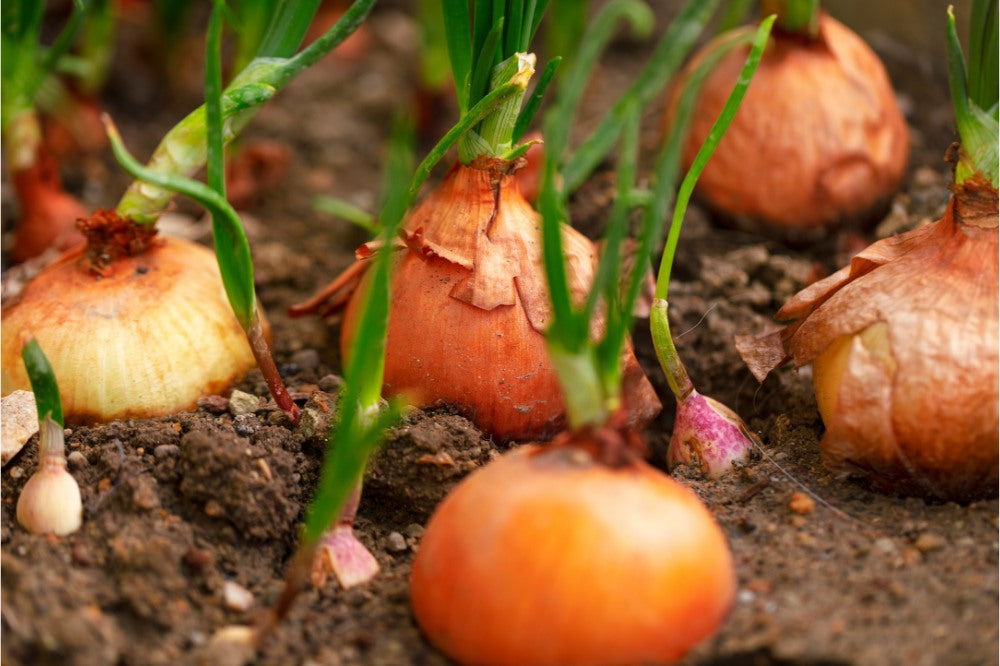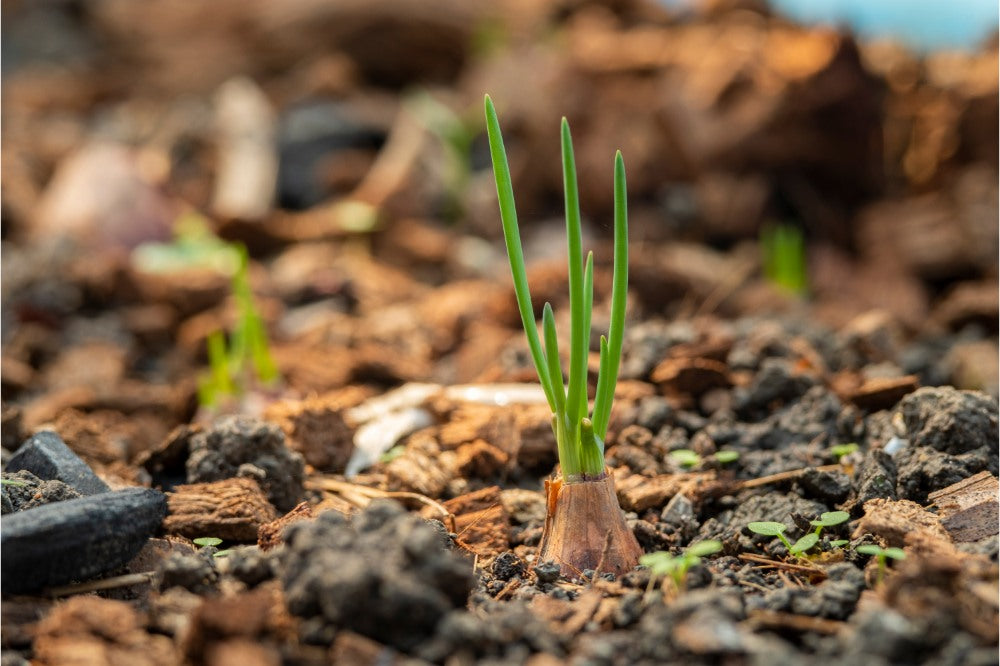The Complete Guide to Planting Onions in the Spring
By Ava Rowe
Author bio: Ava Rowe is a passionate advocate for the transformative power of planting. With a love for nurturing life from seed to harvest, she shares her knowledge and enthusiasm to help others cultivate their own green spaces.
The temperature is mild, the flowers are growing, and you can feel the gentle breeze. It’s finally spring! It’s the perfect time to plant a wide array of vegetables in your planter boxes. But today, we’re talking about a staple in many kitchens—onion plant. If you’re clueless about how to plant onions during springtime, read on! Get your hands ready!

When to Plant Onions
Usually, the suitable time to grow onion plant is in early spring. With favorable growing conditions in the spring, you can be more confident that your onion will grow. During this time, the soil warms up, providing an ideal condition for germinating seeds or bulbs and helping establish a strong root system.
It also aligns with the growth cycle of onions. Your vegetables will receive enough sunlight before summer kicks in, which means that your onions are ready before the harsh heat sets in. Once summer starts, the temperature can be too high for some plants to bear.
How to Grow Onions from Seed
The waiting time for onion plant to grow can be excruciating. But with high-quality seeds, a bit of a green thumb, the right conditions, and lots of love, you’ll soon be ready for a harvest.

- Think about the specific onion variety you like to grow. Also, consider the growing zone where you’re at. These factors are vital for choosing the right seeds.
- Get your planters ready. It must be shallow with holes at the bottom, making it easy to drain water.
- Fill with nutrient-rich soil and sprinkle the seeds on the top.
- Use a lid or plastic to enclose the top part of the container.
- Place it somewhere warm, preferably indoors.
- Wait for seedlings to sprout.
- Once the seedlings harden, put them outdoors. They're ready for transplanting after they grow up to four inches in height.
- Prepare a raised bed or any planter into which you can transplant the seedling. Fill the container with your choice of soil.
- Poke small holes three to four inches deep. Make sure the spacing is even. Transplant the seedlings.
- Water the seedlings until the top part of the soil is moist, and wait for your onions to grow.
How to Plant Onion Bulbs
An onion from another onion plant? Yes, that’s possible! You’ll need an onion bulb to get started. Spare the bottom part next time you make a savory French onion dip or crispy onion rings! You can use it to grow more onions at home!

Prepare a fresh onion plant
Remove the skin. Cut about 1 inch from the bottom part. This is the minimum length you’ll need to grow a healthy bulb.
Dry the onion out
Twenty-four hours work best, although 12 hours is also doable. The side that you earlier cut should be facing up. Once the upper side is dry when you touch it, it's ready for planting.
Poke the onion on four sides using four toothpicks
The toothpicks should be spaced evenly. At this point, you should have something that looks like an X-pattern.
Fill a bowl or glass with water to the brim
Place it on a flat surface and place the bottom part of the onion bulb on top. The toothpicks will act as support. Make sure the bottom part of the onion touches the water.
Put it in a sunny area
Put it in a sunny area, perhaps near a window. Wait until the roots start to grow. This can take only three to four days.
Transplant the onion bulbs in the planters
If you’re planting several onions, a raised garden bed can be a good choice if you need more space. For best results, use well-draining soil. Put the cut onion bulb in the center and cover it with more soil. Leave about an inch or two of the pot’s top without soil. And then water the top part of the soil.
Tips and Tricks for Planting Onions
Planting is just one part of the story. It doesn’t mean you can just leave it and come back to reap what you sow. A proactive approach is necessary to make sure they are healthy.
Your Choice of Soil Matters
Stay away from heavy soils. Loose and well-draining soil is better. You can also improve soil conditions by adding amazing sustainable products, including soil nutrients. Fertilizers can be useful, especially when complementing their use with the right timing. Composting is also a good idea. You’ll be incorporating biodegradable scraps, providing a more ideal condition for your plant to thrive.
Pick the Right Variety
There are many options, but they’re not all the same. A primary consideration would be your location. For instance, if you’re from the southern part of the United States, you’ll do best planting short-day onions. On the other hand, those who are from northern states should opt for long-day onions.
Choose the Right Location
You can start indoors for a more manageable environment. However, if you grow them outdoors, especially after transplanting, the ideal location is one with at least six to eight hours of sunlight. It provides energy for the plant to grow. It can also improve bulb development and speed up growth.
Water Correctly
Like other plants, watering is a must. But you must be careful not to water onions more than what’s necessary. A good practice is to poke the top inch. Sprinkle enough water to make the soil moist once it's dry. Deep watering is also a must after applying fertilizer.
Manage Pests and Diseases
Thrips, onion maggots, and white rot are among the most common problems when growing onions. Insecticidal soaps can help prevent and manage infection effectively. Also, once these problems are apparent in one location, do not plant in the same spot. For instance, once your garden bed is infested, the best thing to do is to move to another garden bed or a different location. Plant new onions to prevent the disease from spreading to other areas.
Wrapping Up
There are different ways of growing onions in the spring, from seeds to bulbs. Success hinges on factors such as the specific onion variety and its compatibility with the growing zone where you live. You also need to choose the right location, consider the type of soil, and prevent common diseases. Regular watering is also crucial, but you must not overdo it.


